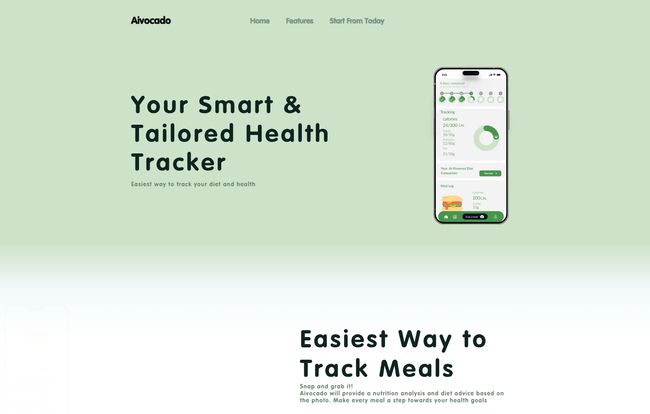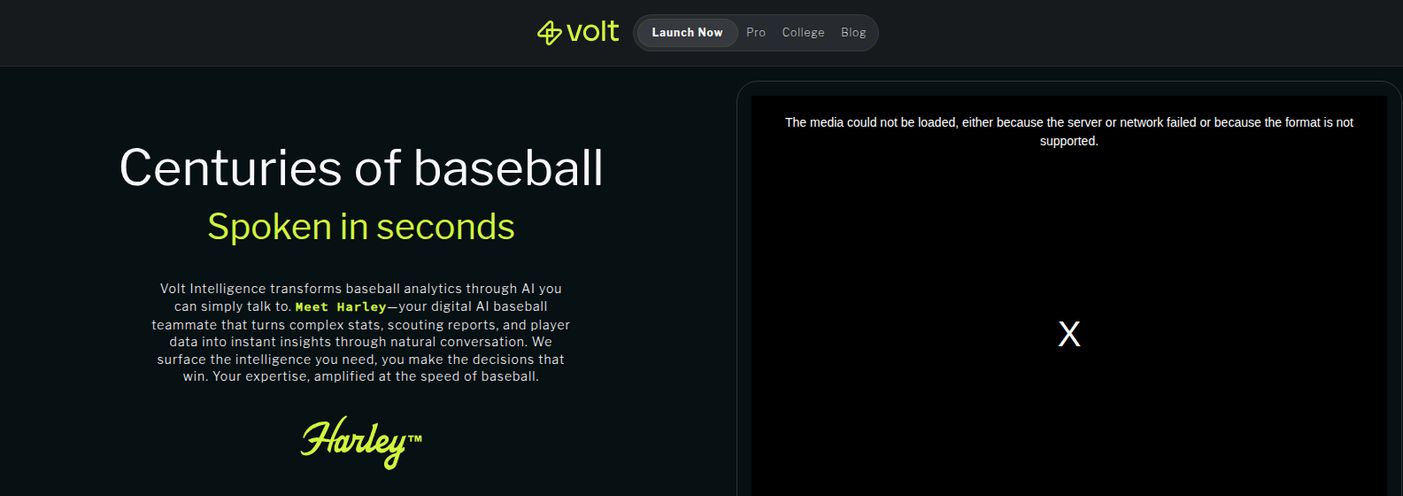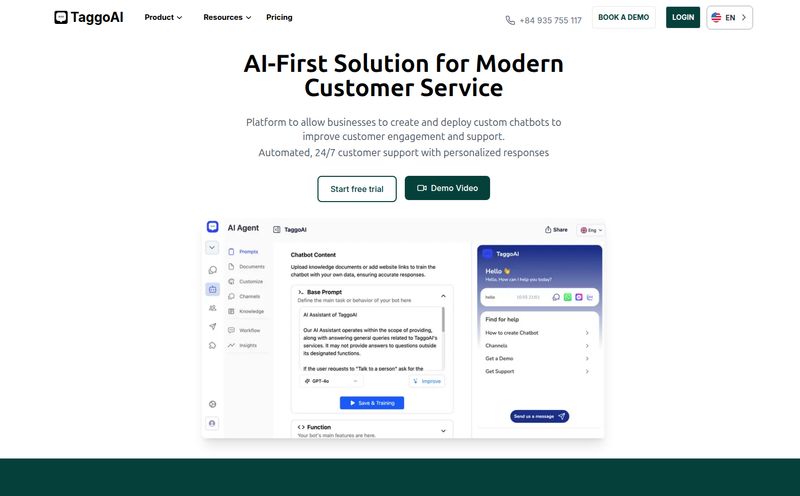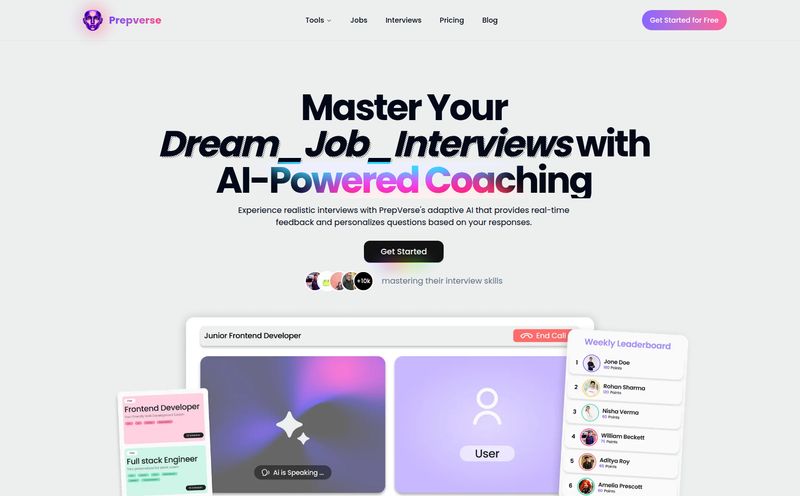Counting calories and tracking macros is... a drag. A soul-crushing, joy-sucking, time-consuming drag. I’ve been there. You’ve been there. We’ve all found ourselves squinting at a restaurant menu, furiously typing “grilled chicken salad, dressing on side, no croutons” into a clunky app, only to give up and just guess. It’s the worst.
For years, the health tech space has promised to make it easier, but mostly it's just given us prettier databases. So when I stumbled upon a new tool called Aivocado, the name alone made me chuckle and I had to see what was up. Part AI, part avocado… it’s a classic tech pun, and as a marketing guy, I respect the hustle. But could this thing actually deliver on its promise to be a “Smart & Tailored Health Tracker”? Or is it just another gimmick destined for the app graveyard on my phone? I decided to take a closer look.
So, What Exactly is Aivocado?
At its core, Aivocado isn't trying to be just another food diary. It’s positioning itself as your personal, AI-powered nutritionist. The whole idea is to move beyond the simple “calories in, calories out” mindset. Instead, it analyzes what you're eating—supposedly understanding the ingredients and their nutritional value—to give you tailored advice and track your health over time. Think of it less like a stern food accountant and more like a curious, data-obsessed dietitian that lives in your pocket. It's an ambitious goal, and one that hinges entirely on its execution.
The Magic Wand: Aivocado's Food Recognition
Okay, here’s the feature that gets all the attention. The thing that makes you go “ooh, that’s cool.” Aivocado lets you take a picture of your meal, and its AI analyzes the photo to log the food for you. No more manual entry. No more searching endless lists for the right brand of yogurt. You just snap a picture of your bowl of oatmeal or that suspiciously large burger and it does the heavy lifting.
How It Aims to Work
The process is simple enough. You point your phone, you snap, and you wait for the AI to work its magic. It identifies the food items, estimates portion sizes, and breaks down the nutritional info. It’s basically the Google Lens for your lunch, and in theory, it’s a game-changer. It removes the single biggest point of friction for anyone who's ever tried to maintain a food log for more than three days.

Visit Aivocado
My Honest Take on the Tech
I've got to admit, the concept is brilliant. Truly. We’ve seen image recognition get insanely good in recent years, so why not apply it to our plates? However, I’m also a healthy skeptic. My lunch is rarely a perfectly plated steak on a white background. More often it's a messy, complex bowl of... stuff. A stir-fry with a dozen ingredients. A salad with mystery dressing. How well can an AI really tell the difference between full-fat and low-fat cheese from a photo? Or guess the amount of oil used to cook my eggs? The accuracy here is everything, and if it gets it wrong, you’re back to manually correcting things, which kind of defeats the purpose. It's a fantastic idea, but the real-world performance will be the true test.
Beyond the Photo: What Else is in the Aivocado Toolkit?
While the image scanning is the main hook, it’s not the only thing Aivocado has going for it. The platform is built around a few other key features designed to make healthy eating a more guided experience.
- Personalized Meal Plans and Advice: This is where the “Tailored Health Expert” tagline comes into play. Based on your goals and what you’ve been eating, Aivocado offers suggestions for meals and recipes. This is a huge step up from apps that just show you charts of your failures. It's about giving you a path forward, not just a report card on your past.
- AI Diet Assistant: The site mentions this feature, which sounds intriguing. I imagine it as a sort of chatbot where you can ask questions like, “What’s a good high-protein snack?” or “Help me plan dinner with chicken and broccoli.” If done well, this could be incredibly useful for those moments of decision fatigue.
- Long-Term Tracking and Reports: This is more standard, but still essential. Getting a weekly health report helps you see patterns. Are you always low on fiber on weekends? Do you eat less protein on days you work from home? Seeing these trends is the first step to actually changing them. It's about the long game, not just one perfect day of eating.
The Million-Dollar (or $49.99) Question: Aivocado Pricing
Alright, let's talk money. We all want to know what this will cost. Aivocado uses a freemium model, which I’m always a fan of. It lets you kick the tires before you commit.
The Free Plan: A Generous Taster
The free plan is surprisingly robust. You get the AI-generated recipes, the tailored diet advice, the AI assistant, tracking, and the weekly reports. The one major catch? You only get two food image recognitions per day. This is a clever strategy. It gives you a taste of the magic feature, but if you’re serious about tracking all your meals, you’ll hit that wall pretty fast. It’s a perfect trial run.
The Premium Plan: Going All In
For those ready to commit, the Premium Plan unlocks the platform's full potential. The biggest perk is unlimited food image recognition. This is the main reason to upgrade. You also get a “Nutrition Widget,” which I assume is a handy home-screen tool for quick insights. The price is listed at $49.99 per year, which they compare to a $9.99/mo cost. That annual price breaks down to about $4.17 a month, which is honestly very competitive. It's less than a single fancy coffee.
| Plan | Cost | Key Features |
|---|---|---|
| Free Plan | $0 / month | Limited Food Image Recognition (2/day), AI Recipes, Diet Advice, Tracking & Reports. |
| Premium Plan | $49.99 / year | Unlimited Food Image Recognition, Nutrition Widget, plus all free features. |
The Unspoken Concerns with AI Health Tech
As excited as I am about tools like this, my brain always goes to the potential downsides. With any AI health tool, data privacy is a big one. You're essentially sending photos of your meals and personal health data to a server somewhere. It's important to be comfortable with their privacy policy. Some might argue that relying on an algorithm for health advice is risky. And they're not wrong. I see Aivocado as a powerful tool to build awareness and provide guidance, not a replacement for a doctor or registered dietitian, especialy if you have a medical condition.
Final Thoughts: Is Aivocado Worth a Bite?
So, what’s the verdict? I think Aivocado is genuinely promising. It’s tackling the single biggest pain point of nutrition tracking with a modern, tech-forward solution. The idea of making healthy eating as simple as snapping a photo is, frankly, what many of us have been waiting for.
It seems perfect for the person who is generally healthy but wants to be more mindful, or the person just starting their fitness journey who feels overwhelmed. The free plan makes it a no-brainer to at least try. Will the AI be perfect? Probably not, at least not at first. But it doesn’t have to be. If it’s right 80-90% of the time, that’s still a massive improvement over manual logging.
The fact that they're offering a free month of premium for early email sign-ups suggests they're new and hungry, which is often when companies are at their most innovative. I’m cautiously optimistic and genuinely excited to see how it performs in the chaos of a real kitchen.
Frequently Asked Questions about Aivocado
- 1. How accurate is the Aivocado food image recognition?
- While the goal is high accuracy, AI image recognition can vary. It will likely perform best with simple, clearly plated foods and might struggle with complex, mixed dishes like stews or casseroles. The accuracy is something you'd have to test with your own typical meals.
- 2. Can I use Aivocado for specific diets like keto or vegan?
- The platform provides "Tailored Diet Advice," which suggests it can be customized. You would likely set your dietary preferences and goals during setup, and the AI would then generate recipes and advice that fit a vegan, keto, or other dietary framework.
- 3. Is my health and food data safe with Aivocado?
- This is a critical question for any health app. You should always review the platform's Privacy Policy and Terms of Use (linked on their site) to understand how your data is stored, used, and protected before uploading personal information.
- 4. What happens if the AI misidentifies my food?
- A good food logging app, even an AI-powered one, should allow for manual correction. You should be able to edit the ingredients or nutrition information if the AI gets it wrong to ensure your tracking remains accurate.
- 5. Is the Premium plan worth it?
- This depends on your usage. If you find yourself wanting to track more than two meals a day with the camera, the Premium plan's unlimited scans would be essential. At less than $5 a month (billed annually), it's a small investment if it helps you stick to your goals.
- 6. Is Aivocado an app I can download now?
- The website mentions "Once the Aivocado app hits the scene," which implies it might be in a pre-launch or beta phase. Signing up with your email on their site seems to be the best way to get access and a free trial when it's fully available.
Conclusion
In a world saturated with health apps that all do pretty much the same thing, Aivocado feels like a genuine step forward. It's smart, it's modern, and it focuses on solving a real problem. By removing the tedious task of manual logging, it could finally make consistent nutrition tracking accessible to everyone, not just the ultra-disciplined. It might just be the tool that helps you navigate your diet, one bite—and one snapshot—at a time.
Reference and Sources
- The official Aivocado website: aivocado.online
- Nature Digital Medicine: A study on the potential and challenges of AI in nutrition



